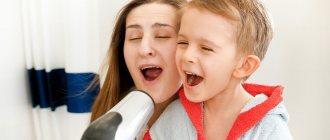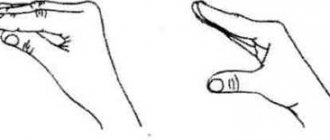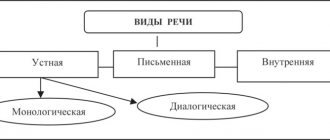Techniques for correcting the tempo-rhythmic aspect of speech in preschool children
Suturina E.V., Cherepennikova M.V. Techniques for correcting the tempo-rhythmic aspect of speech in preschool children // Sovushka. 2021. N1(11). URL: https://kssovushka.ru/zhurnal/11/ (access date: 11/18/2021).
Order No. 53263
Often the speech of preschool children is slurred, intermittent and hasty. Children often have difficulty with monologue speech: trying to tell a story faster, the child does not pronounce words, fiddles with clothes, speaks as if choking, sometimes stuttering, and there is a violation of logical stress. In other words, the fluency of speech and its tempo-rhythm are not formed.
These problems are successfully solved with exercises aimed at developing a sense of rhythm: logorhythmics and logoplasty.
A system of motor exercises in which various movements are combined with the utterance of special speech material is called logorhythmics. Logoplasty combines two concepts: the creation of a verbal image and plastic movement, without rhythmic actions associated with rhyming.
The range of these exercises is very wide: from the correction of speech disorders, the development of speech breathing, to the coordination of the activity of all parts of the peripheral speech apparatus, the development of motor coordination, and voluntary behavior.
These techniques are successfully used not only by speech therapists, but also by preschool teachers of various age groups in classes on speech development, physical education, music, and visual arts.
The sources of movements for rhythm are considered to be physical exercises, dance and plot-shaped movements.
The rhythm uses:
| Physical exercise | Simple dance elements | Plot-shaped movements |
| — Basic movements (walking, running, jumping), — General developmental (without subjects and with subjects) — Drill exercises (formations, changes and movements) | — Fixed (have an original composition of movements); — Free (movements invented by children); — Characteristic (rabbit dance); — Plot (a story where the content is conveyed in movement); — Pairs (built on the basis of movements, walking and running); — Dancing with singing (coordinating singing with movement). | Imitation of the characteristic habits of animals and birds, etc. |
Tempo and rhythm are in a complex relationship and interdependence.
Tempo plays a significant role in conveying emotional and modal information. The rhythm of speech is defined as the regular repetition of similar and commensurate speech units, performing a structuring, text-forming and expressive-emotional function [1, p.6].
In their work, teachers of preschool institutions use the following series of techniques aimed at developing a sense of rhythm and tempo of children’s speech:
1. Playing music with sounding gestures;
2. Games with sounds;
3. Speech music making or speech rhythmic exercises;
- Improvised movement;
5. Game rhythms and game gymnastics with elements of creative training.
1. Playing music with sounding gestures is a rhythmic play with the sounds of your body, or on its surfaces:
- clapping (loud - with the whole palm, quiet - with bent palms, rubbing palms, etc.)
- spankings (on the knees, on the hips, on the sides, on the chest);
- foot stomps (whole foot, heel, toe);
- clicks (fingers in the air, on knees, on puffy cheeks)
For example, Speech game “Hello, palms”
| Hello, palms! Clap, clap, clap! | Clap your hands |
| Hello legs Top, top, top! | Stomping feet |
| Hello cheeks Plop, plop, plop! | The index fingers pat the cheeks |
| Chubby cheeks Splash, splash, splash! | |
| Hello sponges Smack, smack, smack! | Imitate kisses |
| Hello teeth Chock, chock, chock! | Teeth chattering |
| Hello our nose Peep, peep, peep! | Press on the spout |
| Hello babies Hi all! | Waving hand |
2. Games with sounds are aimed at developing phonemic hearing and perception. These games are used both for the development of non-speech hearing (recognition by ear of the sounds of nature, memorizing rhythm, tone) and speech hearing (discrimination and correct naming of phonemes).
3. Speech music-making or speech rhythmic exercises are indispensable for developing a sense of rhythm and intonation hearing in children.
The method and technique of repeatedly repeating the rhythmic figure of a melodic phrase or harmonic turn is called ostinato.
The rhythm contained in words and phrases can be conveyed not only by sounding gestures, but also with the help of noise instruments (Kinder surprises filled with cereals, sand, bricks, bells, pencils, etc.).
Exercise with ri [2]
(performed while sitting on the carpet or at a table in a circle)
| Fish, fish, | We knock in front of us with chopsticks 2 times |
| Here | We pass it on to the neighbor on the right |
| Worm | We take another stick passed by the neighbor on the left |
| Take a bite at least | We knock in front of us with chopsticks 2 times |
| Just a little bit | We pass it on to the neighbor on the right We take another stick passed by the neighbor on the left |
| Do not ask | We knock in front of us with chopsticks 2 times |
| Me | We pass it on to the neighbor on the right |
| Fisherman | We take another stick passed by the neighbor on the left |
| I'll get caught | We knock in front of us with chopsticks 2 times |
| On the fishing rod | We pass it on to the neighbor on the right We take another stick passed by the neighbor on the left |
| Repeat all movements to the left. Then repeat 2 times faster | |
| If the fish doesn't want to be caught, we move on | |
Speech and movement are closely related. Children unconsciously, while reciting poetry, sway to the beat, or twist a piece of clothing, thereby helping themselves to clearly pronounce the rhythmic test. The teacher, knowing that exercises in which rhythmically pronounced words accompanied by gestures contribute to the establishment of speech-motor coordination, the development of polyrhythmic hearing and metrorhythmic sense. The integrated use of rhythmic speech and movement is easy for children to understand. They are happy to repeat these exercises.
- Improvised movement is a creative, playful and independent manifestation of one’s perception of music. It is important that this music is not familiar to children, and the movements are created by children independently at the time of listening, reflecting the nature of the work, the tempo, rhythmic basis, and emotional coloring.
5. Game rhythms and game gymnastics with elements of creative training are aimed at developing visual and auditory attention, spatial orientation, coordination, accuracy and expressiveness of macro movements.
Speech motor game "Puddle"
There is a circle of rope on the floor. Children stand on the outside of the circle and perform actions with the teacher in accordance with the Russian folk song “Ay-gu-gu-gu”
| Ay-gu-gu-gu, Ay-gu-gu-gu Feet are walking around the yard | They walk in a circle, waving their arms, pretending to be pigeons. |
| There's a puddle in the yard - Your head will spin! Jumped, jumped and jumped. | Jump on two legs from the outside of the puddle one after another |
| I fell straight into a puddle! | Jump into a circle |
| Jump, turn | Jump 2 times, turn |
| And out of the puddle - oops! | When they hear the word “Oop,” they jump out of the circle |
Rhythmic exercises develop children's dexterity, coordination, flexibility, plasticity, expressiveness and precision of movements, spatial orientation, which is why teachers use them in the process of physical education of preschoolers.
The rhythmic series is also implemented in visual activities in the process of learning drawing and appliqué. This is a repetition based on changing the elements of a series, the intervals between them, or both at the same time. So, for example, in drawing it is necessary to develop the ability to rhythmically apply lines, strokes, spots, and strokes. And at an older age - the image of simple and complex ornaments.
In visual arts classes, forming a sense of rhythm in preschoolers, the teacher uses visual and verbal methods and techniques. Visibility contributes to the development of the visual-sensory basis of visual activity, and the word helps to correctly convey the perceived image. In accordance with the topic of the lesson, a poem is selected that conveys the rhythm of the phenomenon being depicted. For example, when drawing rain, you can use the following poem:
| Rain, rain, have fun! Drip, drip, pour water. On a flower, on a leaf, Drip, drip, drip! | Long strokes - lines |
| On the path to the meadow, Drip, drip, drip! | Short, choppy |
| Blue cloud in the sky - Drip, it's raining hard! Drip, drip, drip... | Long strokes - lines |
List of sources used:
1. https://pedlib.ru/Books/2/0015/2_0015-6.shtml#book_page_top
2. https://kladraz.ru/blogs/olga-andrevna-ilicheva/razvitie-chuvstva-ritma.html
Causes of speech pathologies
The basis for disturbances in the tempo and rhythm of speech is an incorrect relationship between the processes of excitation and inhibition in the cerebral cortex.
The causes of tachylalia (accelerated speech rate) are:
- The predominance of excitation processes in the cerebral cortex, responsible for the formation of speech.
- Heredity, congenital characteristics of temperament.
- Imitating the fast-talking of others, mistakes in education - such speech is most often found in unbalanced and excitable children.
The causes of bradyllalia (slow speech) can be:
- Dominance of inhibition over excitation in the speech areas of the cerebral cortex.
- This feature of external and internal speech can be inherited.
- Pathology appears as a result of a child’s imitation of incorrect speech patterns from others.
Causes of stuttering can be:
- Unbearable speech load (learning large poems, memorizing texts that are not age appropriate, memorizing difficult and obscure words).
- Frequent punishment of children, sudden and severe fear, mental trauma due to improper upbringing.
- Excessively accelerated speech due to imitation of family members, getting stuck on individual sounds during speech;
- Traumatic brain injuries, neuroinfections.
The main factors provoking pathology of speech development are congenital or acquired weakness of the nervous system and a decrease in its stability.
What should parents do if their child has a speech disorder?
You should not try to correct this pathology through prohibitions and shouts like “Come on, stop making faces, speak correctly now.” Since these disorders are closely related to the state of the nervous system, you should try to create a calm atmosphere in the family, try to adjust communication with the child, and establish a trusting relationship.
Correction of speech disorders should be carried out by a qualified speech therapist. It is advisable to consult with a neurologist, psychotherapist, or psychologist who works with children with developmental disabilities before starting classes. You will have to be prepared for the fact that the cycle of correctional classes will be long - several months, perhaps several years.
If there are people in the family with speech impairments, you need to work on correcting it. It is advisable for the child to hear calm, quiet speech around him at a leisurely pace for imitation. It is necessary to celebrate any, even the smallest, successes of the child, convince him that the defect can be overcome, and encourage him.
To strengthen the child’s nervous system, it is advisable to carry out general strengthening measures:
- Hardening.
- Doing feasible sports.
- Taking vitamin complexes, a large amount of fresh vegetables and fruits in the diet.
- Maintaining a daily routine.
- Optimization of teaching load.
- As recommended by your doctor, take antipsychotics.
Compliance with such recommendations will lead to the correction of speech disorders.
How to work with children with speech rhythm and tempo disorders in a secondary school?
At the beginning of correctional work to eliminate speech defects, a speech therapist can establish a so-called “silence mode” for a month in order to break the stereotype of incorrect speech. It is necessary that the teacher supports this event, does not force the child to speak out, and if necessary, then controls that this happens through whispered speech.
It is desirable that speech without hesitation or pauses, practiced in classes with a speech therapist, be encouraged and supported by the teacher. There is no need to force the child to repeat an incorrectly pronounced word, discuss his defect with strangers, or demonstrate the characteristics of the pathology. If such a child is left-handed, you cannot re-teach him to write “like everyone else.” With this approach, speech pathologies will resume with renewed vigor.
It is advisable to protect children with speech impairments from participating in noisy and stressful events, long excursions and travel during their correction. The teacher’s speech should be a role model - clear, smooth, calm, expressive, and impeccable in articulation.










